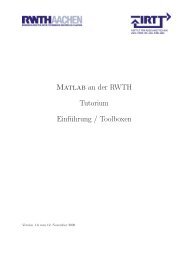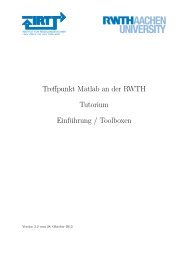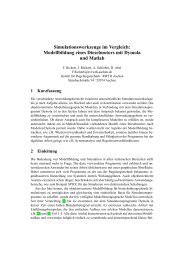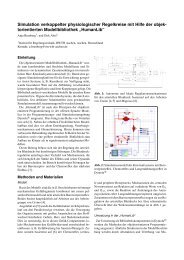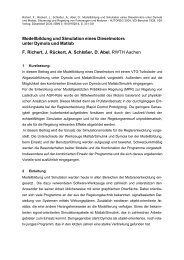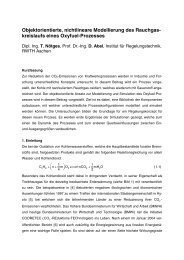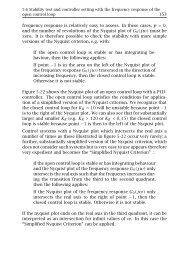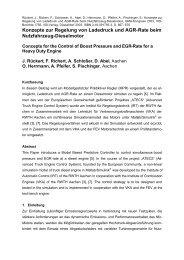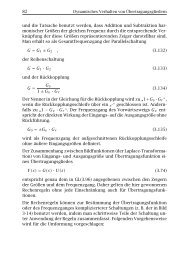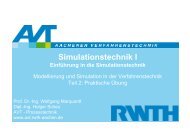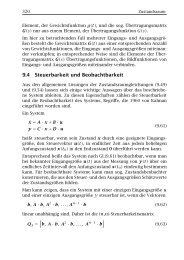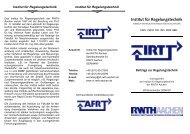Prof. Heinz Pitsch - Institut für Regelungstechnik (IRT) der RWTH ...
Prof. Heinz Pitsch - Institut für Regelungstechnik (IRT) der RWTH ...
Prof. Heinz Pitsch - Institut für Regelungstechnik (IRT) der RWTH ...
Create successful ePaper yourself
Turn your PDF publications into a flip-book with our unique Google optimized e-Paper software.
Seminarankündigung<br />
im Rahmen des<br />
Son<strong>der</strong>forschungsbereich 686<br />
<strong>Prof</strong>. <strong>Heinz</strong> <strong>Pitsch</strong><br />
Center for Turbulence Research<br />
Stanford University, USA<br />
hält am<br />
Dienstag, 17. Juli 2007 um 14.00 Uhr<br />
im<br />
Seminarraum des <strong>Institut</strong>s für Technische Verbrennung<br />
Raum 221<br />
einen Vortrag zum Thema<br />
„Multi-Scale Simulation of transport and<br />
chemistry in Polymer Electrolyte Membrane<br />
Fuel Cells“
Seminarankündigung<br />
im Rahmen des<br />
Son<strong>der</strong>forschungsbereich 686<br />
<strong>Prof</strong>. <strong>Heinz</strong> <strong>Pitsch</strong><br />
Abstract<br />
Computational chemistry presently is a rapidly evolving field, because of recent improvements in<br />
computational power and theoretical developments, and the great potential of computations to further the<br />
un<strong>der</strong>standing of chemical processes and the interactions of chemistry and transport phenomena. These<br />
computational approaches include quantum chemistry simulations, molecular dynamics simulations, and<br />
dynamic Monte Carlo simulations (DMC).Here we will present the development of a computational chemistry<br />
based multi-scale model for computational fluid dynamics simulations of polymer electrolyte membrane<br />
(PEM) fuel cells. The multi-scale model is based on DMC simulations of the chemistry on the electrocatalyst<br />
surfaces. Several advancements in numerical techniques for computational chemistry simulations and their<br />
applications to real systems will be presented for the example of the PEM fuel cell cathode. Transition<br />
probabilities required for these simulations are determined from quantum chemical simulations. For<br />
electrochemical simulations, the local reaction center theory by An<strong>der</strong>son is used. We present an efficient<br />
mathematical framework to determine the potential-dependent transition states of electron transfer reactions by<br />
quantum calculations. This method leads to fast convergence, reliability, and robustness of the located<br />
transition states for more complex systems with a larger number of degrees of freedom, and makes these<br />
computations cost-efficient enough to study a large number of individual reactions. As an example, adsorbent<br />
interactions relevant for electrochemical steps of the oxygen reduction reactions are discussed. Because of the<br />
possible importance of such adsorbent interactions and other non-linear local chemical effects, DMC methods<br />
are expected to describe the chemical behavior more accurately than environment-averaged methods. In PEM<br />
fuel cells, carbon-particle supported platinum nano-particles are often used as electrocatalyst. These Ptparticles<br />
can be approximated to be of cubo-octahedral form. The specific topology of these particles can lead<br />
to important features associated with the complex surface structure. Specifically, the edge/corner sites can<br />
behave differently from sites located on the faces. Environment-averaged approaches, such as the mean-field<br />
approximation, often fail to accommodate the details of such local phenomena. DMC is computationally much<br />
more demanding than conventional approaches, and several different DMC simulations algorithms have been<br />
proposed in the past. An example is the popular Variable Step Size Method (VSSM). VSSM has the advantage<br />
that the computational cost of a single time step is independent of the lattice size for problems with timeindependent<br />
rate parameters, but scales with the square of the number of lattice sites otherwise. Another<br />
method, the First Reaction Method (FRM), can be applied for time-varying rate coefficients, but the<br />
computational cost per time step depends still linearly on the logarithm of the number of lattice sites. Here we<br />
present a new DMC algorithm that can be applied for time-varying rate coefficients, and which has a<br />
computational cost per time step that is independent of the lattice size. To demonstrate the capabilities of the<br />
new method, DMC simulations of cyclic voltammetry of PEM fuel cell electrochemistry will be presented and<br />
compared with experimental observations. Finally, the integration of the DMC simulation technology into a<br />
multi-scale model will be presented. The model describes the interaction of surface chemistry with gas<br />
diffusion in thin electrolyte layers surrounding the platinum particles on the nano-scale and the transport in the<br />
porous material of the catalyst layer on the mirco-scale. Simulation results will be compared with experimental<br />
data of a fuel cell using single crystal Pt electrodes.<br />
Gäste sind herzlich willkommen



